The Vincent dream lives on in a variety of forms. The Irving Vincent is an updated 50-degree air-cooled Twin, designed to retrofit into existing Vincent chassis, but updated in power and sophistication. Two brothers from Melbourne, Australia, Ken and Barry Horner, realized in 1999 that their engineering enterprise, KHE, was able to make just about anything they wanted. What they built was an updated Vincent with a three-gear primary drive, drum-shifted all-indirect five-speed gearbox, and double-bodied oil pump system. The idea is to manufacture, race and sell 1000, 1300 and 1600cc Twins that offer entirely modern performance. The Horners are doing this entirely on their own—there are no outside investors.
As detailed in the October print issue's Race Watch section, a two-valve version of the 1600 won a Twins race at Daytona this past spring, and a four-valve version—based upon ideas originally outlined by the late Vincent engineering chief Phil Irving—has now run on the dyno. The four-valve 1570cc motor recently produced just under 180 crankshaft horsepower at 7278 rpm. The engine employs fuel-injection, a Motec engine-control computer and has electric starting. Peak torque is delivered at 6000.
The big engine's dimensions are 100 x 100mm, and the 1300 has the same bore with a 3¼-inch stroke. The Horner brothers' prior racing experience includes sidecar competition and work with auto racing pushrod V-Eights. When you consider that 355 cubic-inch NASCAR V-Eights are now running above 9000rpm, this 1600's 7300-rpm redline seems downright moderate. Although mean piston speed is 4780 feet per minute, the important number is peak piston acceleration, which is a calm 3700 g. Compare that with the 7000 g of some high-rev four-cylinder sportbike engines, or with the 10,000 g in Formula One.
The Irving Vincent website (www.irvingvincent.com) provides photos of engines and complete bikes, built with up-to-date cycle parts. Planned selling price might be around U.S. $75,000, a number that has already found buyers for other exotic two-wheelers.
The brothers plan to bring their new four-valve 1600 to Daytona next spring. Each pair of valves is operated by a two-armed and roller-tipped single rocker arm. It is remarkable that there was room within the basic design for so much modernization. Clearly, designer Phil Irving wasn't finished with the original engine, and the Horner brothers believe they have simply updated it as he might have done.
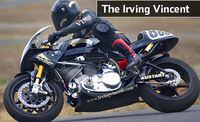
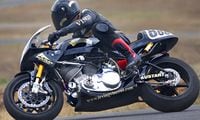
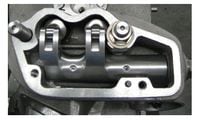
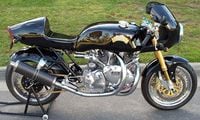
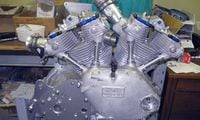
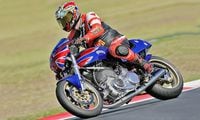
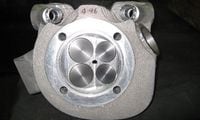
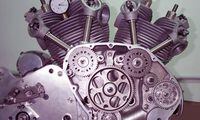
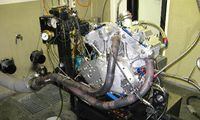
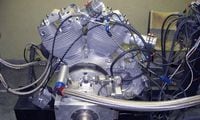
/cloudfront-us-east-1.images.arcpublishing.com/octane/ZN44KZLHD5CHVIY3WZYAGTPGSI.jpg)
/cloudfront-us-east-1.images.arcpublishing.com/octane/5A776WXBY5GAPDYFTTUEUZNIJA.jpg)
/cloudfront-us-east-1.images.arcpublishing.com/octane/NCYHFQ2S3BAT7EC7VDN2ONGRTU.jpg)
/cloudfront-us-east-1.images.arcpublishing.com/octane/XQORS527YFFT3MVI326EOEYJUI.jpg)
/cloudfront-us-east-1.images.arcpublishing.com/octane/TVDPP3TGMZHODFXASIFUM2KD34.jpg)
/cloudfront-us-east-1.images.arcpublishing.com/octane/EWDMR3DDTBBQPI7DQVZCLMRFAE.jpg)
/cloudfront-us-east-1.images.arcpublishing.com/octane/4XHHLVOUKFE3PDSWNSV4JJMGOE.jpg)
/cloudfront-us-east-1.images.arcpublishing.com/octane/5RLI3NQKQJA3LKKCQHRXQFTL6Q.jpg)
/cloudfront-us-east-1.images.arcpublishing.com/octane/3QCYJCI2RNBENIRWAKEOEKHFUM.jpg)
/cloudfront-us-east-1.images.arcpublishing.com/octane/XJFFFMRN6VEZ7CDNAGKWVPC3H4.jpg)
/cloudfront-us-east-1.images.arcpublishing.com/octane/RMC3CHWSHFAUJA2WJ2FVG4NBOA.jpg)
/cloudfront-us-east-1.images.arcpublishing.com/octane/WXEZV4WAYBERFKSRE5M7GQBW7A.jpg)
/cloudfront-us-east-1.images.arcpublishing.com/octane/LO3PZVGICFGJZBNUA2ORUSAUSE.jpg)
/cloudfront-us-east-1.images.arcpublishing.com/octane/UFHLTNOXLVARVLZV32M6ZJZV4Y.jpg)
/cloudfront-us-east-1.images.arcpublishing.com/octane/CTSWNU7SNNCC3LWB2KATYZ5AXY.jpg)
/cloudfront-us-east-1.images.arcpublishing.com/octane/72EPJVNA2VGVXJ2BVDFFLN67KQ.jpg)
/cloudfront-us-east-1.images.arcpublishing.com/octane/A7C4GNXEHNHC3LL6RETG6MIPPY.jpg)
/cloudfront-us-east-1.images.arcpublishing.com/octane/Q4KZ7ACKF5BVTE56LMG7RPJCEM.jpg)
/cloudfront-us-east-1.images.arcpublishing.com/octane/RQ2CXG6ATJBUZGUR7NP35C3VBE.jpg)
/cloudfront-us-east-1.images.arcpublishing.com/octane/MWSEWNFALBBJHOQGZTUUPVOQOU.jpg)
/cloudfront-us-east-1.images.arcpublishing.com/octane/LTPXG4ZHCVFNDNILFQ6PN6YUKI.jpg)
/cloudfront-us-east-1.images.arcpublishing.com/octane/EAEWHFARGVGHFH4N4BDOSNBJSU.jpg)
/cloudfront-us-east-1.images.arcpublishing.com/octane/AZ7H35TQSZDKZCVM4S6CHERQEU.jpg)
/cloudfront-us-east-1.images.arcpublishing.com/octane/GYMIU7SMN5CWHP6QLFR6MVKEBU.jpg)